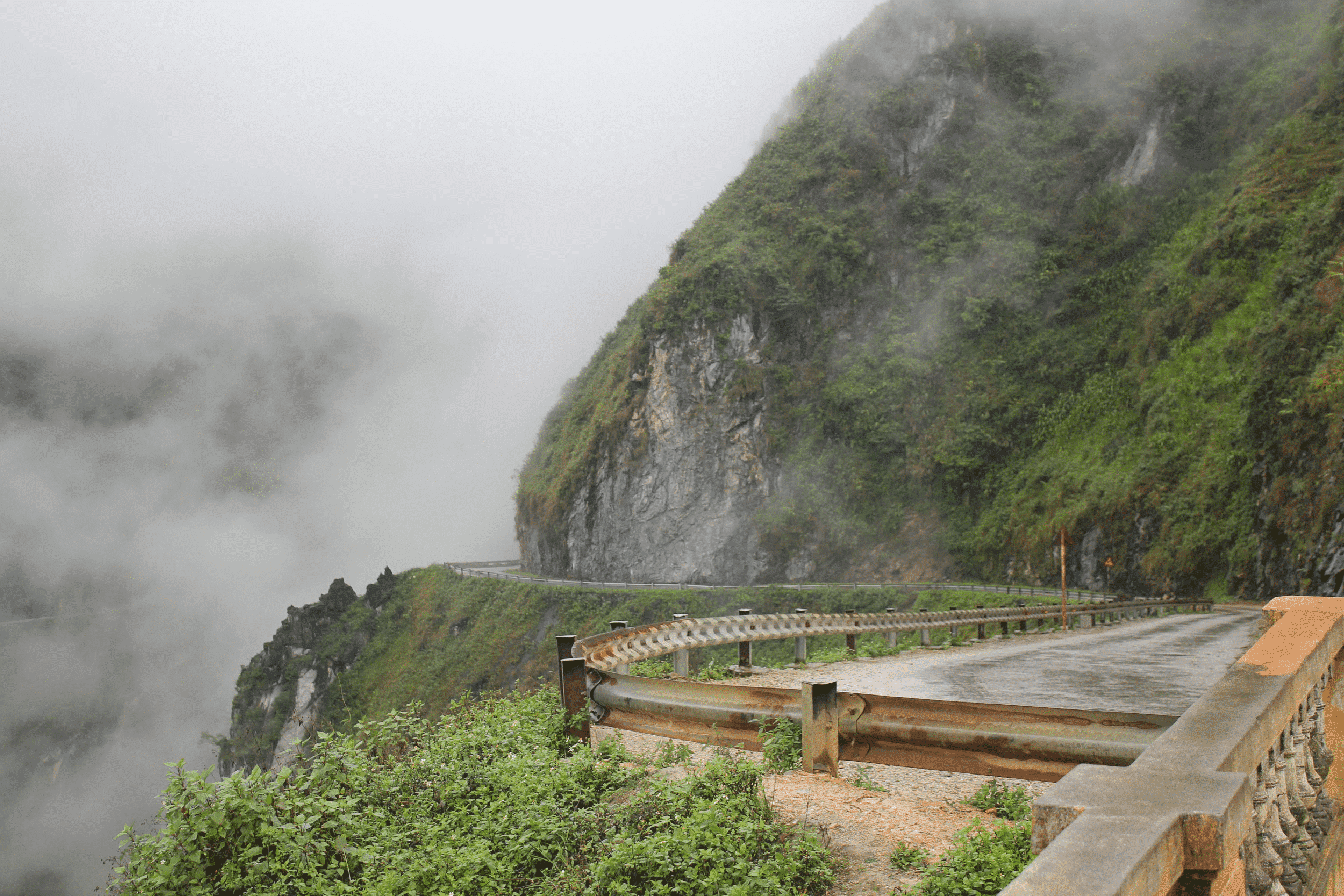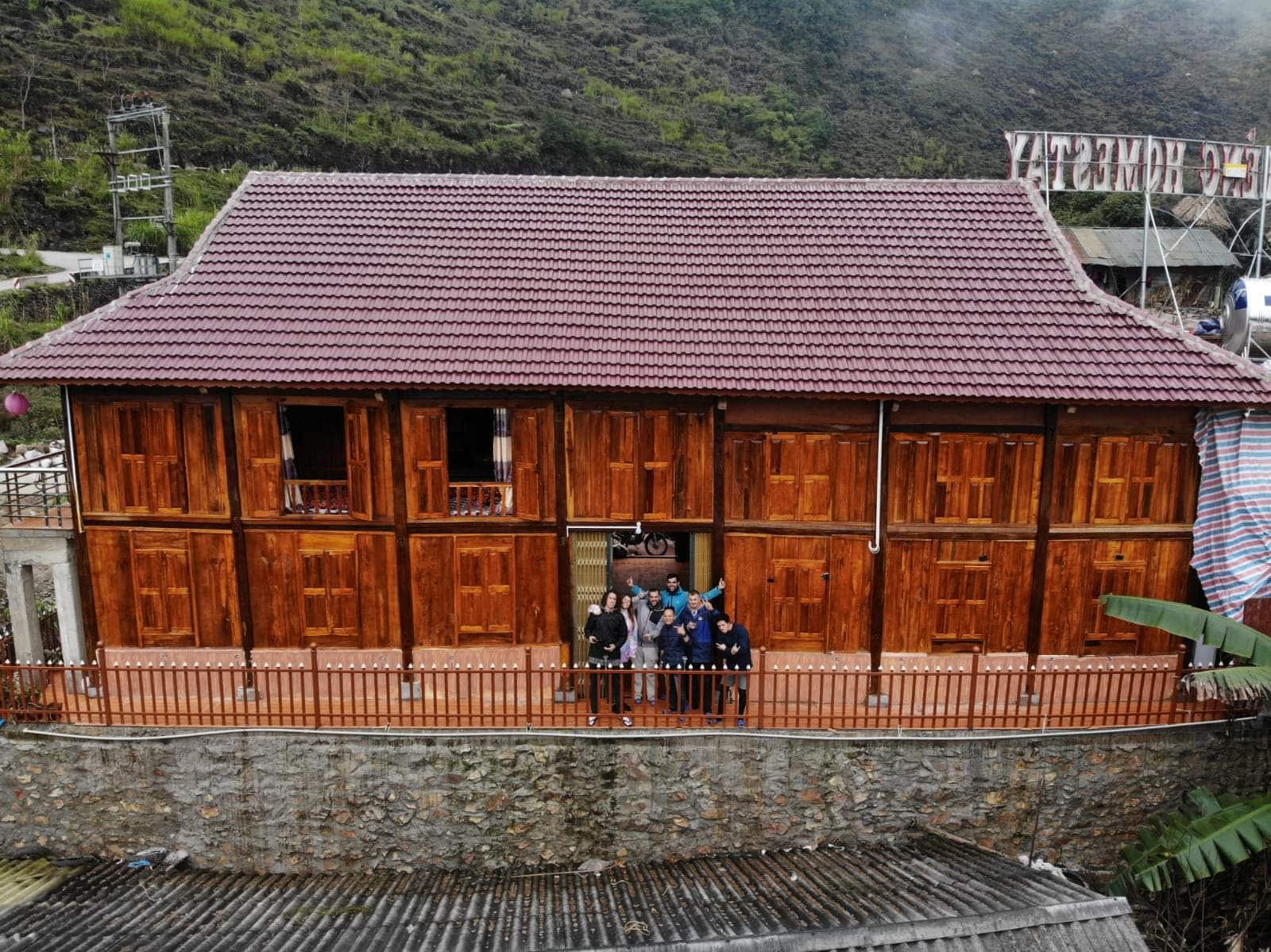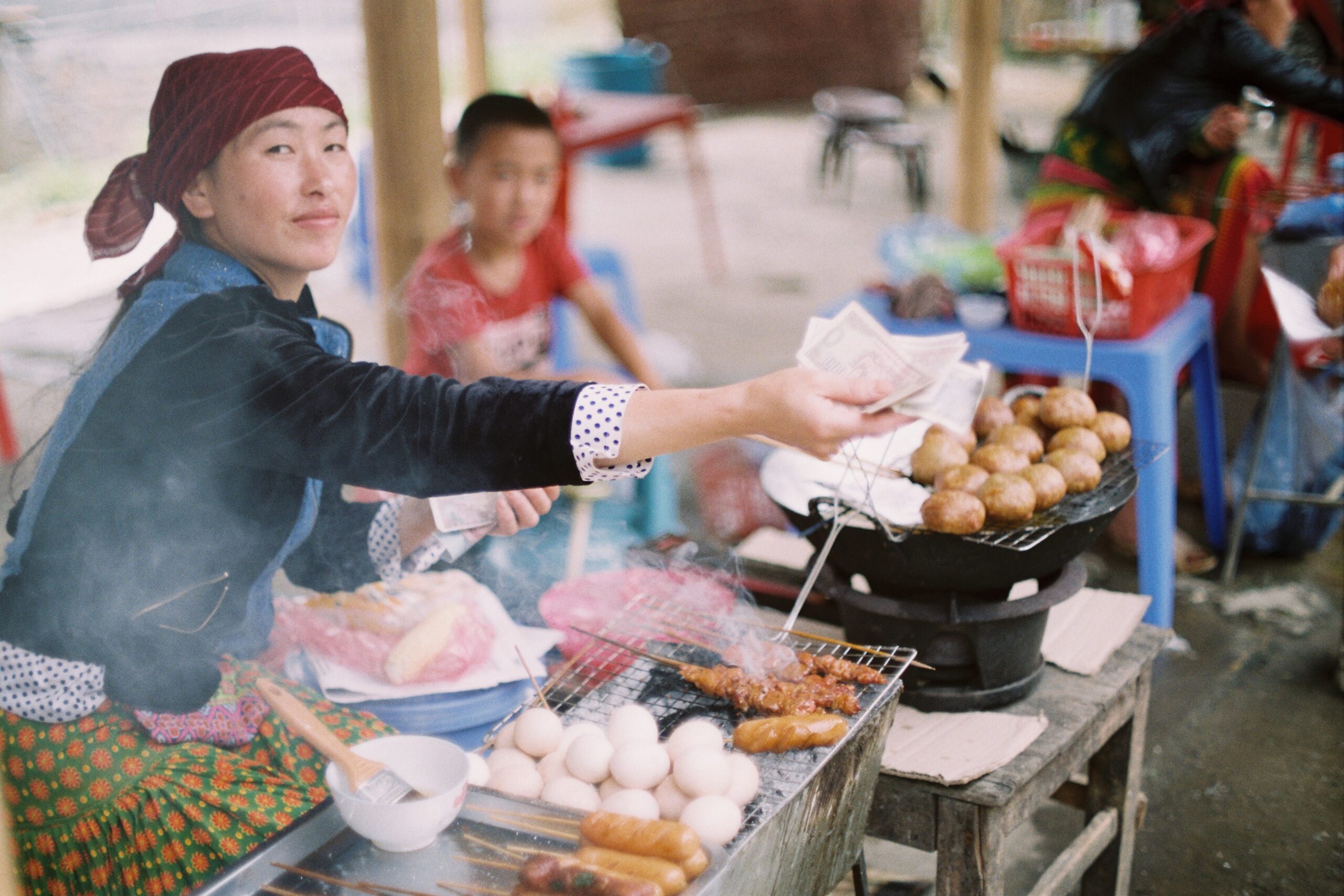
Home > Blog > Destinations > Ma Pi Leng Pass Overview
Ma Pi Leng Pass Overview
Share:
- Published:
- Updated: 20/01/25

The Ma Pi Leng Pass is carved into the mountains in the northeastern corner of Ha Giang province. If the the Ha Giang loop is one of the highlights of any Vietnam motorbike trip, the Ma Pi Leng Pass is one of the highlights of that. The Nho Que river cuts through the pass into a steep and narrow gorge. Here, motorbike riders can find some of the best views and photo opportunities anywhere in the country.
While a Ma Pi Leng tour as a standalone wouldn’t make a lot of sense, it’s an absolute must on any trip through northeast Vietnam. The road along the pass itself is a mere 20 kilometers, but it punches far above its weight. You can do the trip in a day or you can spend more time meandering through the mountains. It’s understandable if you’d like to spend more time here enjoying the almost alien scenery that looks like it was plucked from a Hollywood movie.
Follow along as we go over the need-to-know bits about the road.
Table of Contents
Ma Pi Leng Pass Road
When discussing the Ma Pi Leng Pass road, we’re talking specifically about the QL4C between Dong Van and Meo Vac. One particular segment of this much longer highway goes through the Ma Pi Leng Pass.
That this part of the road was ever built in the first place is a near miracle itself. It clings for dear life to the side of the mountain, as sheer drops off the side plunge hundreds of meters below. The road is narrow and at points would struggle to let two cars pass, though motorbikes don’t suffer this same issue. It’s allegedly a two-lane road, though in many places the lane markers are missing.
The road was completed in 1959 by volunteers from all over the country and was built with thoroughly rudimentary equipment. It’s widely considered one of the most beautiful, if not the most beautiful, roads in Vietnam. It’s now known as the “Happiness Road.”
Heading south from Dong Van, the road climbs up through countless switchbacks and hairpin turns. These turns make for some seriously fun driving. When combined with the scenery, this road can compete with any other mountain highway in the world.
Road Condition

Rain is common in the area. Combined with the elevation of 1500 meters (4500 feet), this means the road can be dangerous. Mud or rock slides, fog, rain, and wet roads are all common conditions. While we absolutely recommend driving this route, we urge cautious driving as a mistake here can lead to a plunge of hundreds of meters off a cliff.
But that’s what mountain roads are all about: if the cliff wasn’t there, there wouldn’t be the view you’re there for. With proper gear, precautions, and a motorbike worthy of the cause, this road can be spectacular. We highly recommend driving a geared bike, not an automatic bike, on this road since you’ll need all the power and braking ability you can get.
That this part of the road was ever built in the first place is a near miracle itself. It clings for dear life to the side of the mountain, as sheer drops off the side plunge hundreds of meters below. The road is narrow and at points would struggle to let two cars pass, though motorbikes don’t suffer this same issue. It’s allegedly a two-lane road, though in many places the lane markers are missing.
A Short History
The road was completed in 1959 by volunteers from all over the country and was built with thoroughly rudimentary equipment. It’s widely considered one of the most beautiful, if not the most beautiful, roads in Vietnam. It’s now known as the “Happiness Road.”
Heading south from Dong Van, the road climbs up through countless switchbacks and hairpin turns. These turns make for some seriously fun driving. When combined with the scenery, this road can compete with any other mountain highway in the world.
Rain is common in the area. Combined with the elevation of 1500 meters (4500 feet), this means the road can be dangerous. Mud or rock slides, fog, rain, and wet roads are all common conditions. While we absolutely recommend driving this route, we urge cautious driving as a mistake here can lead to a plunge of hundreds of meters off a cliff.
But that’s what mountain roads are all about: if the cliff wasn’t there, there wouldn’t be the view you’re there for. With proper gear, precautions, and a motorbike worthy of the cause, this road can be spectacular. We highly recommend driving a geared, i.e. not automatic bike on this road since you’ll need all the power and braking ability you can get.
Ma Pi Leng Highlights
The highlights of the road are usually found in the views: that’s why most people go on a motorbike tour there, after all. One of the first turnout points on the road heading south is the Ma Pi Leng Skywalk, complete with a statue celebrating the construction of the Happiness Road. Not coincidentally, there’s a small museum known as the “Happiness Road Museum” which documents some of the history of the road.
A bit further south, you’ll find the Ma Pi Leng Viewpoint, the best-known stop in the area and where so many of the photos you’ll see of the region were taken. This area gives a perfect view of the dramatic valley the river has carved into the mountains. It’s absolutely a required stop along the way.
Brief aside: just opposite the Ma Pi Leng Viewpoint is a designated photo area where visitors pay to take their photos. This selfie spot may provide a good location to snap a photo. However, the entire area abounds with photo opportunities. If you think it’s silly to pay for a place to take a photo, this may be worth skipping.
There is, however, a coffee shop at the viewpoint that is well worth a stop. If you don’t feel like stopping there, another good coffee shop with excellent views is just a few hundred meters further south. We highly recommend stopping at either one of these shops for a brief while to take in the view.
Ma Pi Leng Pass Accommodation

Typically, travelers through the area will spend the night in Dong Van before driving through the pass to Meo Vac, the next town. However, at the pass itself is the Ma Pi Leng Homestay. It’s the only homestay directly on the pass and makes for an excellent base to explore backroads in the area or hike the mountains. Prices are very reasonable, usually around the $10 mark, and the homestay serves good food as well.
We recommend homestays in this area as you’ll get an authentic experience you wouldn’t with a hotel or hostel. Homestays are usually run by ethnic minorities in the area and are in traditional houses with one large room. These large rooms are divided with curtains or other dividers to give travelers some privacy. They usually place a mattress on the floor and have shared bathrooms.
When staying in a homestay, you can expect some interaction with your hosts — the amount is usually up to you. Many will be more than happy to have a drink of rice wine or beer with you, and almost all will provide food.
Food

There will be a few food stops along the Ma Pi Leng pass road, including at the aforementioned coffee shops. Perhaps a few kilometers before the coffee shops is another shop we enjoy: a Hmong shop with a fantastic view. The shop sells handmade bags, scarves, and other goodies and souvenirs. Next to the shop is where the food is. There are always a couple of Hmong ladies with grills selling traditional snacks as well as simple fare like boiled eggs and grilled corn. The shop is an excellent place to stop as it has an excellent view, quick and cheap food, authentic goods, and a toilet. What else could you need?
It’s important to bear in mind that food in the countryside of Vietnam is almost always fresh as refrigeration hasn’t caught on yet in much of the hinterlands. As a result, fruits, vegetables, and meat need to be bought each day at the market. While this may limit selection, it guarantees freshness. Fruits and vegetables may have been picked just that morning or the previous day, and meat or fish may have been walking or swimming just hours before.
While food in the remote regions won’t be haute cuisine, it will be fresh, healthy, and honest. Grilled meats are popular all over the country, and among the Hmong and Dao minorities, this is no exception. The trend is to have grilled chunks of meat rather than the slices you’ll find in larger cities. These are usually accompanied by a sauce, along with rice and vegetables.
Fruit and Seasonal Food
One major difference compared to western countries is that you can expect that whatever you’re eating is what’s currently in season. We recommend you take particular advantage of the wide variety of fruits available. Many of these fruits are difficult to find in countries outside Southeast Asia. Fruit, in general, makes up a much larger part of the local diet than it does in western countries.
If you find yourself in North Vietnam in June, for example, you’re there in time for the lychee season. Lychees and many of the other fruits found in Vietnam are among the most moreish in the world — dive in and you’ll soon find you’ve eaten far more than you’ve expected.
Local Community

Vietnam officially has 54 ethnic groups. The largest, the Kinh, live in lowlands and along the coast. They make up the majority of the population and speakers of the official Vietnamese language.
The other 53 ethnic groups are distributed widely throughout Vietnam and neighboring countries, largely in backwoods or mountainous areas. Ha Giang and its neighboring provinces are great examples of this. Here you’ll find large communities of Hmong and Dao, among others.
These ethnic groups are distinct from mainstream Vietnamese society and maintain many of their traditions and customs. They have unique styles of dress and architecture as well as unique languages and history. Their uniqueness is not an affectation for tourists: it’s simply their culture. Even in this modern era, there are still plenty of places removed from mainstream society, culture, and media.
Among the ethnic minorities found in this area, the Hmong have one of the most storied histories. Spread across southern China, northern Vietnam and Laos, the Hmong have often held de facto power in the region and occasionally official power. During the French rule of Vietnam, for example, control of the northernmost reaches of the country was delegated to the Hmong. This included the lucrative opium trade, which brought great wealth to their people for a while.
Another group found in the region is the Dao (pronounced Yao). Similar to the Hmong, they are spread across southern China, northern Vietnam, and Laos. Their religious practices were heavily influenced by Taoism and Buddhism, combined with a healthy dose of Chinese traditional religions.
The Surrounding Area: Ha Giang Loop
Since the Ma Pi Leng pass is one of the major stops on the Ha Giang Loop, it’s worth noting the general context of the area. The Ha Giang Loop has gained serious popularity over the last few years due to photographs becoming popular on social media. The roads were always fantastic, but now they’re making their way more and more onto travelers’ bucket lists.
The Ma Pi Leng pass is on the eastern edge of the Dong Van Karst Plateau, a UNESCO Global Geopark. This area of stark contrast between towering, jungle-clad limestone mountains and deep valleys was an ancient seabed millions of years ago. Erosion, mostly from rainfall, has led to the otherworldly scenery found in the area.
Much of this scenery is found in the Dong Van Karst Plateau region, a UNESCO Global Geopark. In 2004, it became the first Geopark in Vietnam recognized by UNESCO. The park is the remains of an ancient seabed. The steep jungle-clad limestone hills have been worn away by rain over millennia, leaving the astounding scenery found today.
Because of its history, you can find oceanic fossils in many locations in the region. If you decide to go for a hike, keep your eyes peeled and look for ancient marine fossils in the rocks. Scientists and travellers alike have found fossils from numerous species of ancient shellfish, fish, crustaceans, and more in this region.
Current species also contribute to the region’s uniqueness. The combination of unique landscape and the region’s remoteness lead to a high degree of unique and often endangered flora and fauna. For example, the Park hosts a colony of Tonkin snub-nosed monkeys, one of the most endangered primates on the planet.
At the End of the Road: Meo Vac
The small town of Meo Vac is at the southern end of the Ma Pi Leng pass. It is a good place to take a brief rest or even spend the night if you’re so inclined. While those passing through the town shouldn’t expect luxury, hotels, coffee shops, and small restaurants are in no short supply. The town is also a good spot to do any small repairs or checkups on your motorbike, like checking tire pressure, patching holes, or changing oil.
Alternate Routes
Only one road goes through the Ma Pi Leng pass. However, once you get to Meo Vac you can branch off west to two other high-quality routes that crisscross the Dong Van Plateau. Have you ever been on a roller coaster, gotten off, and said “I want to do it again?” These routes will give you the opportunity to go through Ma Pi Leng again while seeing new territory on the way there.
Route 1
Highway DT182 loops west of Meo Vac and back north to Dong Van. It crosses the plateau and is a less-trafficked route than the QL4. The route winds its way through tiny villages and the iconic green karst mountains that make up the area, with rice paddies as far as the eye can see. An additional route branching north of the DT182 heading west is the 192B. This road links up with QL4 further west of Dong Van than the DT182, and you’ll see similar if even more remote countryside.
Route 2
Smaller roads like the 192B are a bit of a gamble: their quality largely depends on the time of year and the amount of attention paid to maintenance. In general, we recommend sticking to larger designated highways for safety and accessibility. However, with the right bike, backup equipment, and know-how, these kinds of roads can be a blast.
Ha Giang Loop Shortcut
If you want to bypass the QL4 and cut the end of a Ha Giang Loop run in half, you can follow the DT182 to where it links with the DT176. This route essentially bisects the Ha Giang loop and is far less traveled than the QL4. There are plenty of switchbacks along the way, making for some seriously fun riding.
Additionally, there are a handful of guesthouses, restaurants, and the like at Du Gia. Examples include the Du Gia Homestay, the Du Gia Hostel, Restaurant, and Coffee, and 1HighBar. The area is off the beaten path for now but maybe more discovered in a few years.
Onyabike Adventures’ Thoughts
We can’t get enough of this stretch of road, and we’re not alone. It’s no exaggeration to say that this route gives some of the best scenery in the whole country and has a ‘wow’ factor that could move a stone to tears. Not only is the drive itself a thrill, but the whole surrounding area is more fun than a giant playground.
Do bear in mind the weather when you go, and note that conditions can change rapidly. Whatever the case and whatever the weather, the trip is worth every moment. If you’d like to learn more about how to see the Ma Pi Leng Pass the best way, shoot us a message. Check out our Sapa and Ha Giang Adventure for a full-on tour of the best of the North. Or, if you’re feeling truly adventurous, join us on Sapa and Ha Giang Adventure, a no-holds-barred tour of all the best the country has to offer.
Recent Posts






